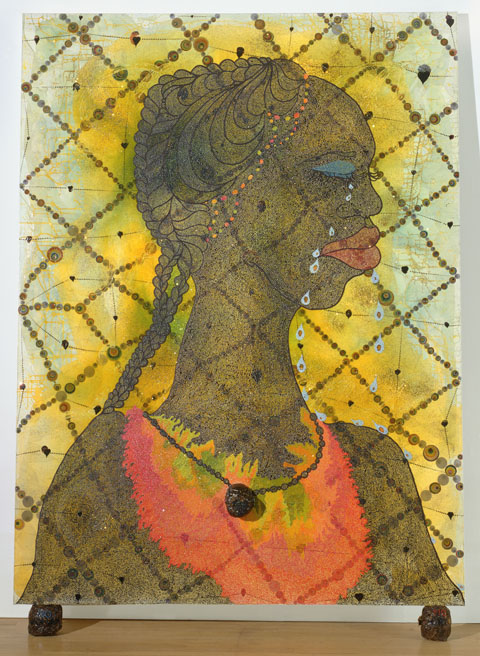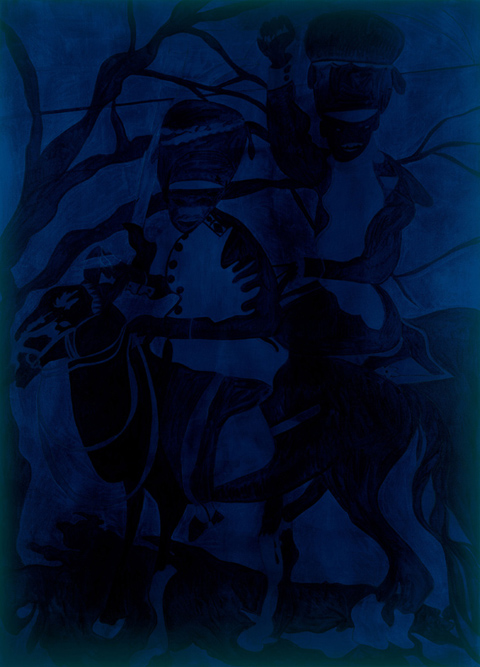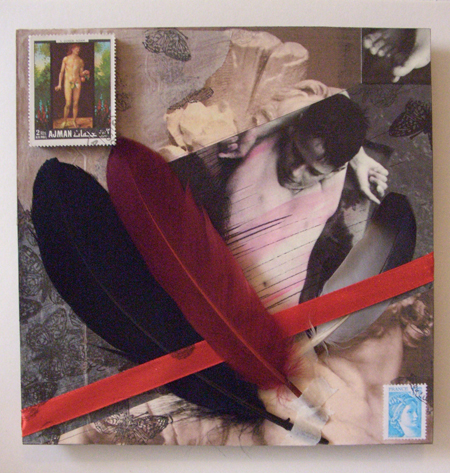
Sparky Deathcap is a twenty-something musician and artist from Cheshire, sildenafil whose wry tales of love and loss are in turns hilarious and heartwrenching. You may have caught him recently supporting the likes of Los Campesinos! and Hot Club de Paris.
On songs like “Berlin Syndrome”, case guitars and handclaps loop and whirl around lyrics like, recipe “Since then you just make cameos when I’m asleep/you’re the William Shatner of this elite genre of women that I have loved and lost,” creating a lo-fi landscape one that is simultaneously bleak and full of warmth. At times the songs are reminiscent of early Smog, when Bill Callahan wrote songs like he had a sense of humour and sometimes felt a bit awkward. As well as the recent Tear Jerky EP (available here) he maintains a brilliant cartoon blog at his website.
It’s a busy year for Sparky, off on a European tour as we speak, but I managed to send a few emails back and forth about comic books, rock operas and the Wonder Years.

So, you’re on tour with Los Campesinos! right now, how’s that going?
It has been really fun, it’s an absolute privilege to tour with my friends Los Campesinos! and the supports, Islet and Swanton Bombs, are two outrageously good bands. It was my birthday the other day coinciding with our Aberdeen date and the crowd sang happy birthday to me which was a really touching moment.
Sparky Deathcap presumably isn’t your real name – is it a sort of onstage personal that allows you to unleash your inner diva, like Beyonce Knowles’ Sasha Fierce?
I originally chose it something like 5 years ago when I started doing the one man and a guitar thing live because I felt like it would be easier to play if I could invent a persona. Now, however, there isn’t really a great separation between Sparky Deathcap and me, except for when I remember some of the crap, depressing gigs I used to do and I think about younger Sparky as this sort of beleaguered little brother or something and how excited he’d be by the exciting things I’m getting to do at the moment. Crikey, my mind is like Fellini directing The Wonder Years. Edited by Lassie.
When you play live you have drawings projected behind you, do you think you might ever make a whole comic book, is that something you’d be interested in?
Oh I have grand, grand plans for comic books. I’m working on a little comics booklet for my album and an illustrated valentines rock opera for next year. I’m also trying to resurrect my weekly comic strip for my new blog. The trouble is that comics are incredibly labour intensive. Chris Ware pointed out once that unlike writing a novel, comics don’t allow any sort of natural flow to occur as every page has to be planned out as a whole and so the panels within in it are predestined. I’d love to create a big Clowesian comic book one day, but for now I have to concentrate upon producing small, gimmicky things to “build my profile”… urggggghhhh, the modern world… adulthood…
You mentioned your rock opera there, what does that involve?
That was something I wrote for a ukulele festival in Manchester last year on Valentine’s Day. I was wrongly under the impression that we had to perform the whole thing on ukulele and didn’t really have any ukulele songs so I set about writing a sort of musical/rock opera about an organ transplant van driver finding love whilst snowbound in a rural town. I drew some illustrations for my old overhead projector as well. I hope to turn it into a special edition record and book for next year’s Valentine’s Day.

Musically, who would you call your biggest influences? You get compared to Jeffrey Lewis a lot, right? But that seems like a pretty easy comparison for anyone who sings and draws…
I have an awful lot of respect, naturally, for Jeffrey Lewis, and he has obviously influenced some aspects of my live show, even if it is in trying to steer away from his territory as much as I possibly can. I suppose the bands I have revered the most over the years are The Beach Boys, Pavement, Smog, Silver Jews, Magnetic Fields and Why?, but increasingly I’m becoming very interested in Steve Reich and Bill Evans. In terms of my artwork I’m very heavily influenced by Archer Prewitt, Daniel Clowes, Chris Ware, Adrian Tomine and Marcel Dzama. Archer Prewitt is another artist/musician; he plays in the The Sea And Cake and under his own name whilst also drawing the incomparable Sof’ Boy comics.
So, after this tour, what’s next for Sparky Deathcap?
Next up: more touring with Los Camp. I’m trying to perfect my world-weary, “oh, touring is such a drag,” but in truth it’s the most fun I’ve ever had. We have European and US tours to come which will be really amazing. In between I’m working hard on writing and recording my album, which is really very exciting.

Sparky Deathcap is a twenty-something musician and artist from Cheshire, viagra dosage whose wry tales of love and loss are in turns hilarious and heartwrenching. You may have caught him recently supporting the likes of Los Campesinos! and Hot Club de Paris.
On songs like “Berlin Syndrome”, generic guitars and handclaps loop and whirl around lyrics like, “Since then you just make cameos when I’m asleep/you’re the William Shatner of this elite genre of women that I have loved and lost,” creating a lo-fi landscape one that is simultaneously bleak and full of warmth. At times the songs are reminiscent of early Smog, when Bill Callahan wrote songs like he had a sense of humour and sometimes felt a bit awkward. As well as the recent Tear Jerky EP (available here) he maintains a brilliant cartoon blog at his website.
It’s a busy year for Sparky, off on a European tour as we speak, but I managed to send a few emails back and forth about comic books, rock operas and the Wonder Years.

So, you’re on tour with Los Campesinos! right now, how’s that going?
It has been really fun, it’s an absolute privilege to tour with my friends Los Campesinos! and the supports, Islet and Swanton Bombs, are two outrageously good bands. It was my birthday the other day coinciding with our Aberdeen date and the crowd sang happy birthday to me which was a really touching moment.
Sparky Deathcap presumably isn’t your real name – is it a sort of onstage personal that allows you to unleash your inner diva, like Beyonce Knowles’ Sasha Fierce?
I originally chose it something like 5 years ago when I started doing the one man and a guitar thing live because I felt like it would be easier to play if I could invent a persona. Now, however, there isn’t really a great separation between Sparky Deathcap and me, except for when I remember some of the crap, depressing gigs I used to do and I think about younger Sparky as this sort of beleaguered little brother or something and how excited he’d be by the exciting things I’m getting to do at the moment. Crikey, my mind is like Fellini directing The Wonder Years. Edited by Lassie.
When you play live you have drawings projected behind you, do you think you might ever make a whole comic book, is that something you’d be interested in?
Oh I have grand, grand plans for comic books. I’m working on a little comics booklet for my album and an illustrated valentines rock opera for next year. I’m also trying to resurrect my weekly comic strip for my new blog. The trouble is that comics are incredibly labour intensive. Chris Ware pointed out once that unlike writing a novel, comics don’t allow any sort of natural flow to occur as every page has to be planned out as a whole and so the panels within in it are predestined. I’d love to create a big Clowesian comic book one day, but for now I have to concentrate upon producing small, gimmicky things to “build my profile”… urggggghhhh, the modern world… adulthood…
You mentioned your rock opera there, what does that involve?
That was something I wrote for a ukulele festival in Manchester last year on Valentine’s Day. I was wrongly under the impression that we had to perform the whole thing on ukulele and didn’t really have any ukulele songs so I set about writing a sort of musical/rock opera about an organ transplant van driver finding love whilst snowbound in a rural town. I drew some illustrations for my old overhead projector as well. I hope to turn it into a special edition record and book for next year’s Valentine’s Day.

Musically, who would you call your biggest influences? You get compared to Jeffrey Lewis a lot, right? But that seems like a pretty easy comparison for anyone who sings and draws…
I have an awful lot of respect, naturally, for Jeffrey Lewis, and he has obviously influenced some aspects of my live show, even if it is in trying to steer away from his territory as much as I possibly can. I suppose the bands I have revered the most over the years are The Beach Boys, Pavement, Smog, Silver Jews, Magnetic Fields and Why?, but increasingly I’m becoming very interested in Steve Reich and Bill Evans. In terms of my artwork I’m very heavily influenced by Archer Prewitt, Daniel Clowes, Chris Ware, Adrian Tomine and Marcel Dzama. Archer Prewitt is another artist/musician; he plays in the The Sea And Cake and under his own name whilst also drawing the incomparable Sof’ Boy comics.
So, after this tour, what’s next for Sparky Deathcap?
Next up: more touring with Los Camp. I’m trying to perfect my world-weary, “oh, touring is such a drag,” but in truth it’s the most fun I’ve ever had. We have European and US tours to come which will be really amazing. In between I’m working hard on writing and recording my album, which is really very exciting.

‘The Holy Virgin Mary’ All Images Courtesy Tate Britain, order London © Chris Ofili
1) Alongside his other works of art, dosage currently being showcased at The Tate Britain, decease one canvas has elicited more controversy than others. The Holy Virgin Mary, portrays an African Virgin Mary surrounded by clippings of genitalia taken from blaxploitation and porn films.
Hang on a minute, could he be making a cultural criticism on the fact that the media has a tendency to deify white idols (Vogue has been in monthly syndication since 1973, to date publishing 446 issues since then, 14 of the covers have featured black women) whereas black women are at best, overlooked and at worst, reduced to faceless sexual objects? Of course he’s not! He’s screwing up America! Bernard Goldman’s right wing book chronicling those who are most to blame for the current predicament of ‘screwed up America’ – the not too creatively titled ‘100 People Who Are Screwing Up America’ listed Ofili at Number 86 for his contributions to the decline of United States. Whether he is directly responsible for environmental decline, the War on Iraq or the 35.9 million citizens living below the poverty line in the US is not made clear. Quite a feat considering he’s actually British. Regardless, Mayor Giuliani was appalled enough by Ofili’s artwork, that in 1999 he threatened to withdraw The Brooklyn Museum of Art’s $7million grant because, as he said “There’s nothing in the First Amendment that supports horrible and disgusting projects!” Well good sir, in which, can we ban Fox News? Or at the very least, Rush Limbaugh. No? Guess the pendulum doesn’t swing both ways. Digressing, I can’t help but wonder whether it’s the depiction of The Holy Virgin Mary as a black woman, the genitalia or the use of elephant dung as an art material that has caused so much outrage?

‘No Woman, No Cry’
2) Continuing from point Number 1; The Holy Virgin Mary had to be placed behind a plexiglass shield when on display in New York. However, crafty little old Christian pensioner, Dennis Heiner, 72, jumped behind the plexiglass shield and smeared white paint over the artwork until the Virgin Mary was obscured from view. He was charged with second-degree criminal mischief and a $250 fine. That wasn’t a typo. $250. Who wants to place bets on what would happen to me if I threw paint around inside the Vatican?

‘Painting with Shit on it.’
3) Chris Ofili refuses to be molded by his own success. His more recent paintings that are displayed in this exhibition have shrugged off the bright glittery tones of their predecessors. Black on black-blue, the new canvases tell a story, but a story you have to dance around to see. Standing in front of dark canvas, adjusting your eyes to make out the images, like looking for sharks in a dark sea, you can make out a few images; a deer carcass, men making music – but being practically invisible, the mind is forced to project it’s own ideas on what Ofili is both displaying and commenting on.
 ‘Blue Riders’
‘Blue Riders’
4) After winning a scholarship to study in Zimbabwe, Ofili studied African cave paintings, which he has cited as a source of inspiration for much of his work.
5) Chris Ofili is one of the few black artists to be included in the artistically elite group ‘Young British Artists’ which also included Damien Hirst and Tracey Emin. Any young artists, or anyone young (under 26) can visit Chris Ofili at The Tate Britain for only £5. Pretty good, eh?
Click for our event listing for this exhibtion
Written by Amica Lane on Wednesday March 10th, 2010 9:27 pm
Categories ,africa, ,african art, ,amica lane, ,art vandalism, ,cave paintings, ,Chris Ofili, ,controversy, ,discounts, ,equal rights, ,left wing, ,politics, ,right wing, ,sensations, ,Tate, ,Tate Britain, ,young british artists
Similar Posts:
 All images courtesy of Camila Soares
All images courtesy of Camila Soares



























































